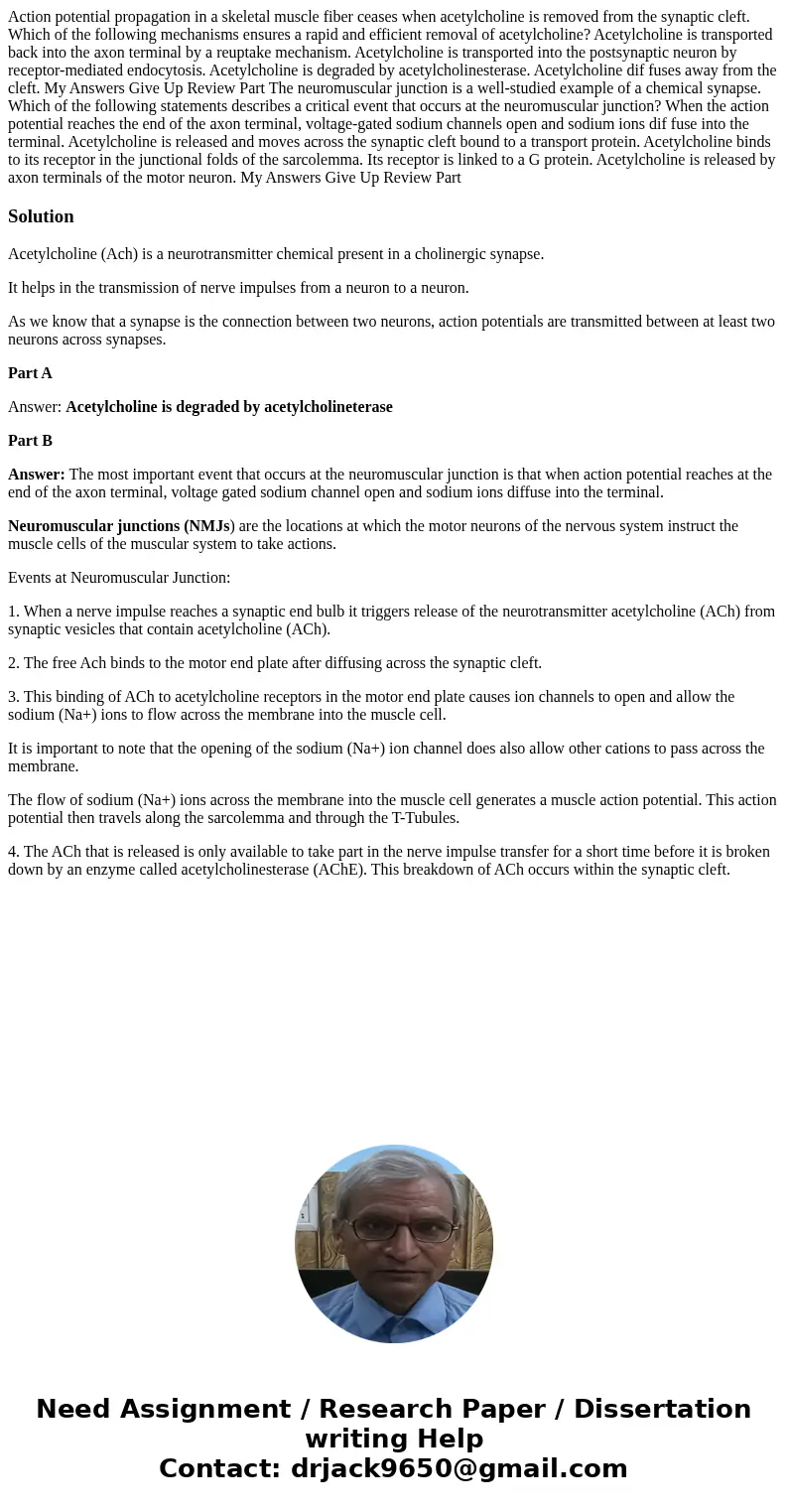Action potential propagation in a skeletal muscle fiber ceas
Solution
Acetylcholine (Ach) is a neurotransmitter chemical present in a cholinergic synapse.
It helps in the transmission of nerve impulses from a neuron to a neuron.
As we know that a synapse is the connection between two neurons, action potentials are transmitted between at least two neurons across synapses.
Part A
Answer: Acetylcholine is degraded by acetylcholineterase
Part B
Answer: The most important event that occurs at the neuromuscular junction is that when action potential reaches at the end of the axon terminal, voltage gated sodium channel open and sodium ions diffuse into the terminal.
Neuromuscular junctions (NMJs) are the locations at which the motor neurons of the nervous system instruct the muscle cells of the muscular system to take actions.
Events at Neuromuscular Junction:
1. When a nerve impulse reaches a synaptic end bulb it triggers release of the neurotransmitter acetylcholine (ACh) from synaptic vesicles that contain acetylcholine (ACh).
2. The free Ach binds to the motor end plate after diffusing across the synaptic cleft.
3. This binding of ACh to acetylcholine receptors in the motor end plate causes ion channels to open and allow the sodium (Na+) ions to flow across the membrane into the muscle cell.
It is important to note that the opening of the sodium (Na+) ion channel does also allow other cations to pass across the membrane.
The flow of sodium (Na+) ions across the membrane into the muscle cell generates a muscle action potential. This action potential then travels along the sarcolemma and through the T-Tubules.
4. The ACh that is released is only available to take part in the nerve impulse transfer for a short time before it is broken down by an enzyme called acetylcholinesterase (AChE). This breakdown of ACh occurs within the synaptic cleft.

 Homework Sourse
Homework Sourse